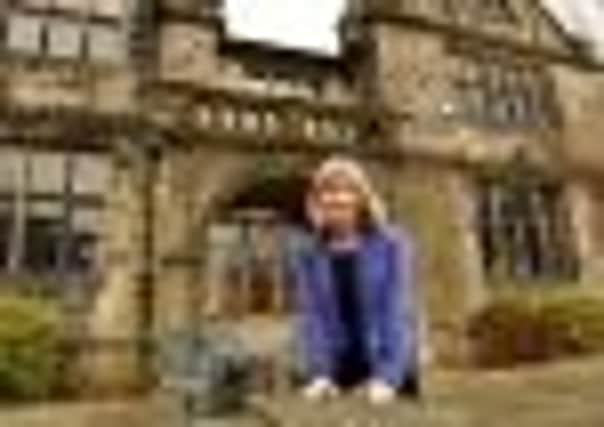Novel and romantic


It was here she settled down to research and write her best-known book – the definitive and wonderfully-readable biography The Brontës, which was highly acclaimed and won The Yorkshire Post Book of the Year Award.
It is a myth-busting blockbuster and the first updated edition is just out, with new nuggets on the world’s most famous literary sisters, their brother, Branwell, and father Patrick. The book, first published in 1994, stems from her own childhood in Bradford, where her father was a wool merchant. She became obsessed with the Brontës and read Mrs Gaskell’s biography on Charlotte Brontë when she was 13.
Advertisement
Hide AdAdvertisement
Hide AdWhen she landed a job as curator and director of the parsonage museum, in Haworth, it allowed her to delve deeper into the reality of a story that had been heavily romanticised and fictionalised by everyone from Charlotte’s friend, Mrs Gaskell, to film makers and fans.
“What surprised me most was that they didn’t live in some backward village cut off from society. I spent two years reading local newspapers of the time and they showed clearly that the place described by Mrs Gaskell was quite different to the real Haworth. It was a busy, industrial township with its own subscription library and lots going on,” says Juliet, who is most proud of rescuing Branwell’s reputation.
Painted as a drunken, feckless artist who brought shame on his family, he was, she says, the main creative force in the family and was adored by his sisters.
“He was the leader, the innovator. Where he led, his sisters followed. What I also found was that what was supposed to be the most shameful event in his life never actually happened. He was supposed to have won a place at the Royal Academy, where he spent money on drink and drugs and was sent home to Haworth in disgrace. In fact, he never went there at all. Manuscripts show that his tutor felt he wasn’t quite ready for the academy.”
Advertisement
Hide AdAdvertisement
Hide AdHer latest version of the book includes new material on Charlotte. “She really struggled to be a writer and an independent woman, but I upset people by taking away her pedestal. She is painted as someone who sacrificed everything to look after her sick father and that’s not strictly true. She was a dutiful daughter, but she was much more complex than that. She used him as a convenient excuse not to go to London or to avoid events she didn’t want to attend.”
Juliet recently discovered that Charlotte initially had ambitions as an artist too. “I went through catalogues for the Royal Northern Society for the Encouragement of the Arts exhibitions in Leeds Library. I knew the Brontës had visited and found that Charlotte had two drawings exhibited in 1834. They didn’t sell, which destroyed any hope of her being a professional artist.”
Juliet wrote The Brontës in a first-floor room overlooking the church until her daughter Sophie was born and it became a bedroom. Then she moved into the attic where she wrote a fascinating biography of Wordsworth. Her obsession with her subject prompted her son, Edward, then eight and now 25, to write a school essay entitled “The mad woman in the attic”.
Now that Sophie, 18, has claimed the second floor as teenage space complete with bedroom, sitting room and bathroom, Juliet has created a new study on the floor below. She is working there on another historical book about the poll tax rebellion and is contemplating packing up a mount of belongings and a lot of furniture.
Advertisement
Hide AdAdvertisement
Hide AdFurnishing the six-bedroom, Grade II listed former vicarage was a challenge for her and husband James, a company director. “We lived in Bradford in a 1930s’ semi, so this felt vast to us, but it was amazing and the location was perfect and very private,” says Juliet. “When we first moved in, friends and family gave us furniture and we’ve bought more over the years.”
The house, which has a wealth of period features, was built in 1901 by Helen Strickland in memory of her father, a mill owner called Hinchliffe Hinchliffe.
“It is very Brontë-esque and Hinchliffe is a very Heathcliffe name, yet it’s away from Haworth and all the tourists,” says Juliet. The Barkers, who have been together since their teenage romance blossomed in Bradford, have completely renovated the house and made sensitive additions.
These include a large stone terrace which makes the most of the magnificent views, The décor is elegant and though Juliet claims to have little interest in interiors and hates shopping save for “pottering round Hebden Bridge”, her creative eye and exacting nature has ensured that it looks just right. “I like the house to look nice and the historian in me wants it to reflect its period. I couldn’t do contemporary. I like living in old houses that have a connection with the past.” The blue dining room is her favourite room and was useful for large, formal dinner parties when James was High Sheriff of West Yorkshire from 2004 -2005. To celebrate that year, his portrait was painted by Todmorden-based, Czech-born artist Bohuslav Barlow and hangs above the grand staircase along with another Barlow picture of the family outside the house. They will be going with her when she leaves for the Dales and its softer landscape.
Advertisement
Hide AdAdvertisement
Hide Ad“It will soon be just the two of us and this is a big house. It’s time to go and although I will miss it, I’m still going to have a moor to look at, which I’m pleased about. That’s very important to me.”
The Old Vicarage is for sale with Charnock Bates at £1.1m Tel: 01484 380100, www.charnockbates.co.uk
www.julietbarker.co.uk